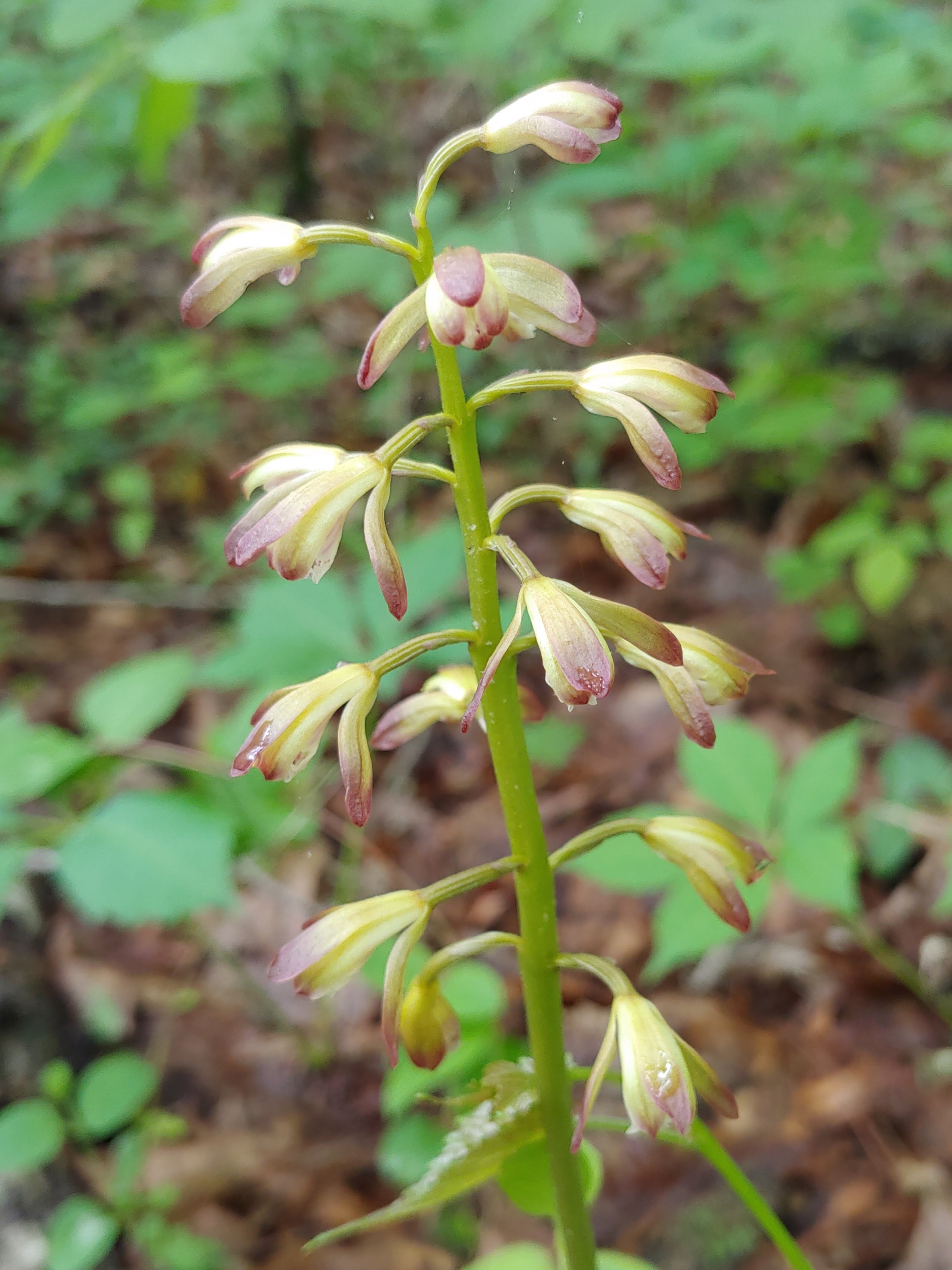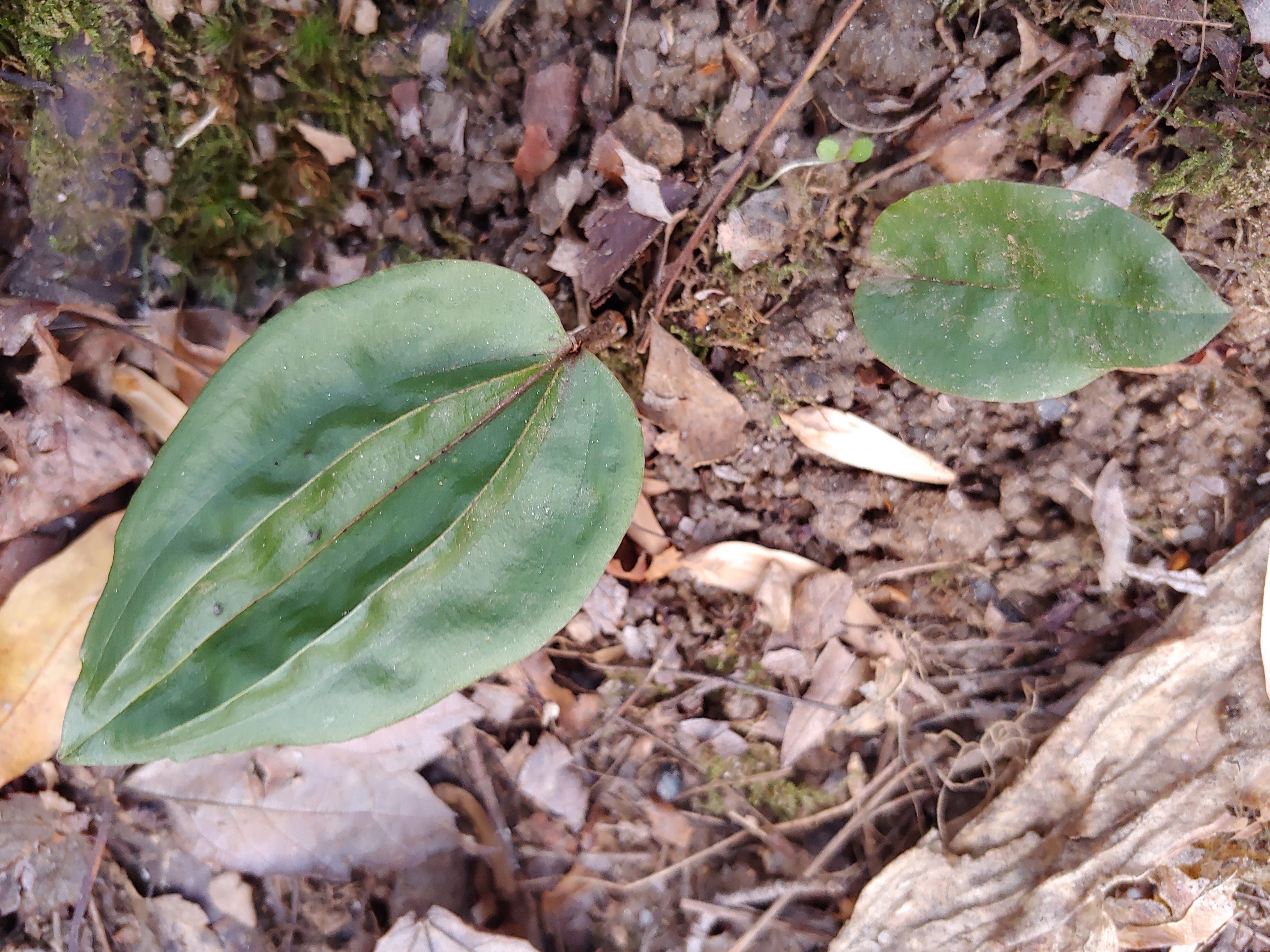I am quite pleased that seven Putty Root orchids (Aplectrum hyemale) have survived the year. All are in one area, with several other areas found not suitable, I suppose.
The floral and foliage display of the Putty Root is modest, and unremarkable compared to other terrestrial orchids. It is native, found locally in damp, but not wet ground in forests, primarily in proximity of beech (Fagus), maples (Acer), and oaks (Quercus). Most curious, I find, is that a single striped leaf with a purple back appears in late autumn. The leaf fades in early spring, followed by a foot tall stalk that flowers in late spring. There is no evidence of the orchid after the flower fades until the leaf appears in November.

This is not a plant that is easily noticed in the forest, or in the garden, but it is a prize that I must marvel over every time I pass on the path beside the garden’s stream. There was a question if the Putty Root orchid could survive removed from the relationship with the canopy trees, but after a year the answer is yes, at least in this particular situation where it is in the shade of a willow leafed Japanese maple (Acer palmatum ‘Atrolineare’).

Under a polished limestone bench at the garden’s edge is a single Cranefly orchid (Tipularia discolor, below), one of three planted a year ago. Sited as more common than Putty Root, I rarely see this very similar native orchid.

Why bother? The Cranefly and Putty Root’s show is modest and short lived, and their cultural requirements are rigid. Of course, there is little popular appeal for such a plant, but there must be a place for ones that are less dazzling, but unique. Certainly there is in this garden.